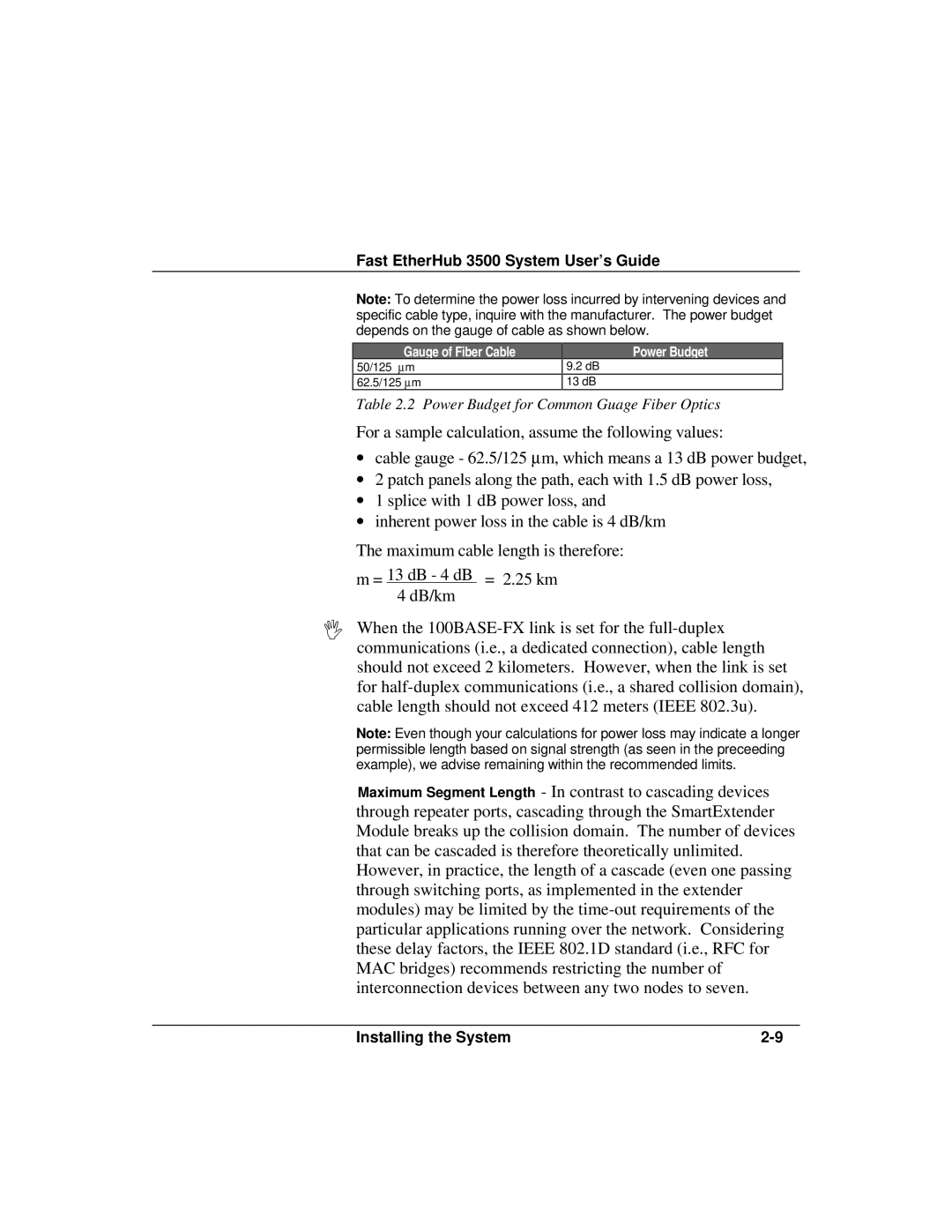
Fast EtherHub 3500 System User’s Guide
Note: To determine the power loss incurred by intervening devices and specific cable type, inquire with the manufacturer. The power budget depends on the gauge of cable as shown below.
Gauge of Fiber Cable
50/125 mm
62.5/125 mm
Power Budget
9.2dB 13 dB
Table 2.2 Power Budget for Common Guage Fiber Optics
For a sample calculation, assume the following values:
∙cable gauge - 62.5/125 mm, which means a 13 dB power budget,
∙2 patch panels along the path, each with 1.5 dB power loss,
∙1 splice with 1 dB power loss, and
∙inherent power loss in the cable is 4 dB/km
The maximum cable length is therefore: m = 13 dB - 4 dB = 2.25 km
4dB/km
ΙWhen the
Note: Even though your calculations for power loss may indicate a longer permissible length based on signal strength (as seen in the preceeding example), we advise remaining within the recommended limits.
Maximum Segment Length - In contrast to cascading devices through repeater ports, cascading through the SmartExtender Module breaks up the collision domain. The number of devices that can be cascaded is therefore theoretically unlimited. However, in practice, the length of a cascade (even one passing through switching ports, as implemented in the extender modules) may be limited by the
Installing the System |
